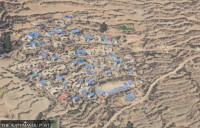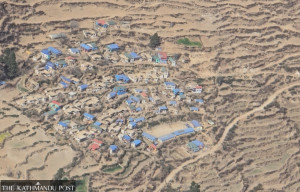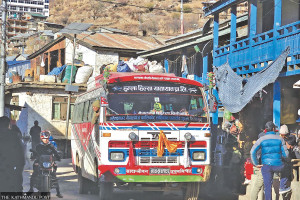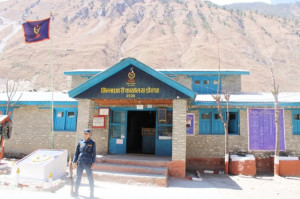Karnali Province
Limi locals deprived of social security grants for 17 months
More than 200 beneficiaries haven’t been able to reach the bank to verify their KYC applications and hence haven’t been able to collect the money.
Janak Bahadur Shahi
The beneficiaries of the social security allowance at Til, Halji, and Jang villages, collectively known as Limi, in Humla’s Namkha Rural Municipality-6 have been deprived of the allowance for the last 17 months.
Nepal government spends on various social security schemes, including medical insurance, allowances, and subsidies. To disburse the allowances to the beneficiaries, the government adopted the electronic payment system in the fiscal year 2019-2020 following financial irregularities in the local units.
The government deposits the allowance to the recipient’s bank account directly through the digital payment system. However, in Humla, a geographically remote district, the new payment method implemented in November last year has failed to take off due to a lack of technical resources.
Officials of Namkha Rural Municipality say the distribution of social security allowance has been on hold due to incomplete bank paperwork. “The rural municipality has already deposited Rs9 million in the bank for the recipients of Limi. But they haven’t been able to receive their allowances in their bank account because their KYC verification is yet to be completed at the bank,” said Ashwini Kumar Devkota, accountant of Namkha Rural Municipality.
There are more than 200 people including the elderly, disabled, and children in Limi who haven’t been able to reach the bank to verify their KYC applications in order to receive their social security benefits.
According to Devkota, the beneficiaries from the rural municipality have not been able to go to the bank to verify their KYC because of the difficult geography and bad weather conditions.
Previously, the beneficiaries could go to their respective ward offices and collect their allowances. “They would come to collect a lump sum amount around mid-June to mid-October before the winter sets in,” said Devkota. “But now they have to go to the banks directly which is not possible for them, especially between the months of October to May when the weather is unfavourable.”
The last time the locals of Limi collected their social security allowance was in mid-July 2021. “Then the electronic transfer system came into implementation in November 2021 but the beneficiaries could not go to the bank to verify their KYC applications,” said Paljor Tamang, ward chairman of Namkha-6.
Kunjyok Lama, a 70-year-old man from Til village, said that he has not received his elderly allowance since July 2021. “Continuous snowfall from mid-October to May makes living in Limi very difficult,” said Lama. “Then the snowmelt begins disrupting transportation services in the area. It takes two days of walking on clear weather days to reach the central ward office in Yalbang of Namkha Rural Municipality where the bank is located.”
According to Lama, beneficiaries have requested for their allowance to be distributed from the ward offices as done previously but the authorities have been ignoring their requests.
“I am poor and old. I can’t travel for two to three days to verify my KYC at the bank,” Lama said. “There is no one to listen to the challenges of poor people.”
Tamang says the electronic system, although envisioned to make receiving the allowance easier for beneficiaries, has backfired in the rural area where there is hardly any internet connectivity.
“The elderly, disabled, and children cannot reach the bank or the ward office easily. Even when they do, the internet connection is very poor in the office so they can’t verify their KYC through the office,” said Tamang, the ward chair. “Very few people have smartphones and computers to verify their KYC online.”
According to the data of the municipal office, there are 224 beneficiaries in ward 6.
Mohan Bahadur Shahi, acting chief administrative officer of the Namkha, said that the allowance comes to the local unit from the Department of Civil Registration, which is part of the Ministry of Federal Affairs and Local Development, in charge of managing Nepal’s social security benefits.
“With the current arrangement of the electronic payment system, the money has gone directly from the account section to the bank’s account but since the beneficiaries are yet to verify their KYC applications, the amount is stuck at the bank,” said Shahi.




 16.29°C Kathmandu
16.29°C Kathmandu















